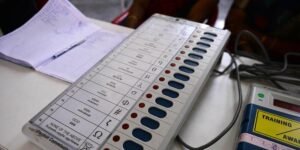Tamil Nadu Government Moves Supreme Court: The Battle Over Naming Welfare Schemes After Living Persons
Table of Contents
- Introduction
- Background: Tamil Nadu’s Welfare Politics and Naming Controversy
- The Madras High Court’s Interim Order: A Turning Point
- Grounds for the Order
- Scope of the Restraint
- Why Did the Tamil Nadu Government Challenge the Order?
- Key Arguments from the State
- What Are the Legal and Ethical Issues at Stake?
- 1. Constitutional Principles of Neutrality
- 2. Electoral Fair Play
- 3. Public Accountability and Awareness
- Political Reactions: Ruling and Opposition Viewpoints
- Ruling DMK’s Stand
- Opposition (AIADMK, BJP, Others)
- National Significance: Why This Case Matters Beyond Tamil Nadu
- 1. Setting a Precedent
- 2. Federalism and State Powers
- 3. Poll-Time Governance
- Media, Public Opinion, and the Role of Civil Society
- Timeline of Events: Key Milestones
- Comparative Perspective: What Other States and Countries Do
- The Road Ahead: Possibilities and Implications
- If the Supreme Court Upholds the High Court Order
- If the Supreme Court Overrules the Order
- Frequently Asked Questions (FAQs)
- Conclusion
Introduction
In a development that has stirred both legal circles and political corridors, the Tamil Nadu government’s move to the Supreme Court, challenging the Madras High Court’s restraint on naming welfare schemes after living persons, has ignited a national debate. This issue strikes at the intersection of governance, political communication, constitutional law, and electoral ethics. This article provides a detailed, SEO-friendly analysis, spanning legal precedents, recent happenings, the political context, and the broader implications for Indian federal governance.
Background: Tamil Nadu’s Welfare Politics and Naming Controversy
Tamil Nadu has long been recognized as a pioneer in welfare schemes, with successive governments using such initiatives as political and social tools. The branding, especially with names and images of chief ministers or party leaders, serves not only to promote schemes but also to cement political legacies.
- Historically, schemes such as the ‘Amma Canteen’ (after former CM J Jayalalithaa) or ‘Kalaignar Insurance Scheme’ (named after M Karunanidhi) have blurred the lines between governance and political image-building.
- The practice is neither new nor unique to Tamil Nadu, but the state’s assertive schemes and robust media coverage often make it a bellwether for the rest of India.
However, questions about the propriety and constitutionality of using public resources for schemes named after living political personalities have become more frequent in recent years.
The Madras High Court’s Interim Order: A Turning Point
On July 31, 2025, a division bench of the Madras High Court issued an interim order that prohibited the Tamil Nadu government from:
- Naming any new or rebranded government welfare scheme after a living person, regardless of their stature or contribution.
- Using the photograph, emblem, or name of any former Chief Minister, ideological icon, or political party in advertisements, banners, and promotional materials related to these schemes.
Grounds for the Order
The court’s rationale was based on:
- Supreme Court guidelines regarding the use of images/names of public figures in government advertisements.
- The principle of political neutrality, especially when using public funds.
- A public interest litigation (PIL) filed by AIADMK MP C Ve Shanmugam, who alleged that schemes named after CM MK Stalin and the use of party insignia in communications conferred undue political advantage in a democracy.
Scope of the Restraint
Importantly, the High Court clarified that:
- Its order does not stop the government from launching, implementing, or operating any welfare schemes.
- The restraint is specifically on nomenclature and the visual branding tied to politicians or political parties.
Why Did the Tamil Nadu Government Challenge the Order?
On August 4, 2025, the Tamil Nadu government, represented by Senior Advocate Mukul Rohatgi, urgently moved the Supreme Court to challenge the High Court’s order.
Key Arguments from the State
- Executive Prerogative: The government argued that the naming of schemes is an executive function, falling under its administrative domain.
- Constitutional Validity: Citing the need for effective outreach, the state maintained that naming schemes after leaders helps ensure visibility and recognition among the masses.
- Federal Autonomy: The state government warned that judicial overreach into administrative discretion could set a precedent that unnecessarily curtails the powers of elected governments.
The Supreme Court, led by Chief Justice BR Gavai, listed the plea for an urgent hearing, underlining the significance of the issue in Indian federal polity.
What Are the Legal and Ethical Issues at Stake?
1. Constitutional Principles of Neutrality
- The Constitution mandates that government funds are used for public purposes, not partisan promotion.
- The Supreme Court’s 2015 guidelines (in the Common Cause case) discouraged the use of photographs of political leaders except for constitutional authorities like the President, Prime Minister, and Chief Justice in state-sponsored advertisements.
- The Madras High Court relied on these precedents, emphasizing the need for neutrality in publicly funded communications.
2. Electoral Fair Play
- Branding schemes after serving political leaders or recently deceased personalities can create the perception (and reality) of unfair advantage in elections.
- The Election Commission of India has, in some cases, advised against such practices, as they amount to indirect campaigning at the public’s expense.
3. Public Accountability and Awareness
- Governments argue that attributing schemes to known leaders increases public awareness and accountability.
- Critics say this fosters a culture of personality politics, which may distract from the actual benefits and outcomes of the schemes.
Political Reactions: Ruling and Opposition Viewpoints
The standoff has sharply divided the political spectrum, reflecting both local and national divides:
Ruling DMK’s Stand
- Asserts its right to choose scheme names.
- Maintains that the court’s interim order interferes with the state’s administrative discretion and federal autonomy.
- Emphasizes that many beneficiaries identify schemes by their popular leaders’ names, making administrative communication more effective.
Opposition (AIADMK, BJP, Others)
- Welcomes the High Court’s move, arguing that such branding is a form of self-promotion and misappropriation of taxpayer funds.
- Demands a broader national debate on political branding of public welfare programs.
National Significance: Why This Case Matters Beyond Tamil Nadu
1. Setting a Precedent
A Supreme Court ruling will have all-India applicability, potentially affecting naming conventions for welfare initiatives nationwide.
2. Federalism and State Powers
Striking a balance between administrative freedom and regulatory oversight is a persistent challenge in India’s federal structure.
3. Poll-Time Governance
Several states have used welfare announcements and branding as tools for electoral mobilization. Clarity on this issue can help demarcate public welfare from political marketing.
Media, Public Opinion, and the Role of Civil Society
This legal-political showdown has attracted vast media coverage and triggered vibrant discussions in civil society:
- Legal experts largely support judicial restraint on the use of living leaders’ images or names in schemes, citing principles of fairness and transparency.
- Citizens’ groups and right-to-information activists argue that naming schemes after political leaders often complicates the evaluation of their impact, as the focus shifts from services to personalities.
- Media editorials urge larger political reforms, advocating for a clear, transparent naming policy for government initiatives.
- Some sections point out that public memory is often short, but institutionalizing good practices can pay long-term dividends in governance.
Timeline of Events: Key Milestones
| Date | Event |
|---|---|
| July 31, 2025 | Madras High Court issues interim order restraining TN govt from using living persons’ names. |
| August 1, 2025 | Opposition welcomes the order; controversy generates national discourse. |
| August 2, 2025 | Government signals intent to challenge; preparations begin. |
| August 4, 2025 | TN government moves Supreme Court for urgent hearing. |
| August 6, 2025 | Supreme Court lists the case for hearing before CJI’s bench. |
Comparative Perspective: What Other States and Countries Do
Other Indian states have followed similar naming practices—be it ‘KCR Kits’ in Telangana or ‘NTR Housing Scheme’ in Andhra Pradesh. Globally, there are varying policy positions:
- USA & UK: Government programs are rarely named after sitting politicians; neutral terminology is the norm.
- Developing Countries: Many use such naming for promotional advantage, though it receives criticism from transparency advocates.
The Road Ahead: Possibilities and Implications
If the Supreme Court Upholds the High Court Order
- Naming conventions will be standardized, promoting depoliticization of welfare schemes.
- All current and future schemes in India may have to use neutral, descriptive names.
- Governments may need to rely on outreach strategies that highlight the scheme’s impact, not its political branding.
If the Supreme Court Overrules the Order
- States will retain broad discretion in branding schemes.
- Expect renewed debate around the ethics and fairness of such practices, with potential calls for legislative reform.
Frequently Asked Questions (FAQs)
Q: Does the High Court order stop welfare schemes altogether?
A: No. The order only pertains to naming and branding, not to the operation or existence of welfare schemes.
Q: Why is naming important in governance?
A: Scheme branding helps in communication and execution, but also risks becoming a tool for political gain.
Q: Is there a law specifically banning such naming?
A: There is no statute specifically, but court judgments guide the constitutional interpretation and set boundaries.
Conclusion
The Supreme Court’s upcoming verdict on the Tamil Nadu government’s plea will mark a watershed moment for Indian democratic practice. At its heart, this case is about fairness, transparency, and the boundaries between statecraft and political image-making. As the courts, governments, and civil society debate these questions, the outcome will define how India’s democracies communicate, celebrate, and deliver social welfare in the years ahead.
For policy watchers, legal analysts, and political leaders, this moment is key: it will not only shape the future of welfare scheme branding in Tamil Nadu but could echo across the entire fabric of Indian governance.
Note: All legal and political developments referenced are as of August 4, 2025, and are based on available news and judicial records.
- https://indianexpress.com/article/india/tamil-nadu-govt-welfare-schemes-name-living-persons-party-symbols-high-court-10164060/
- https://www.indiatoday.in/india/law-news/story/madras-hc-pulls-up-tn-govt-for-naming-government-schemes-after-cm-mk-stalin-asks-to-drop-it-2764719-2025-08-01
- https://www.business-standard.com/india-news/hc-bars-tamil-nadu-govt-from-naming-welfare-schemes-after-living-persons-125080200422_1.html
- https://www.news18.com/india/tamil-nadu-govt-moves-sc-after-madras-hc-restrains-state-from-naming-schemes-after-mk-stalin-9482672.html
- https://economictimes.com/news/india/sc-to-hear-tn-govts-plea-against-hc-order-barring-it-from-using-name-picture-of-cm-in-welfare-schemes/articleshow/123088563.cms




